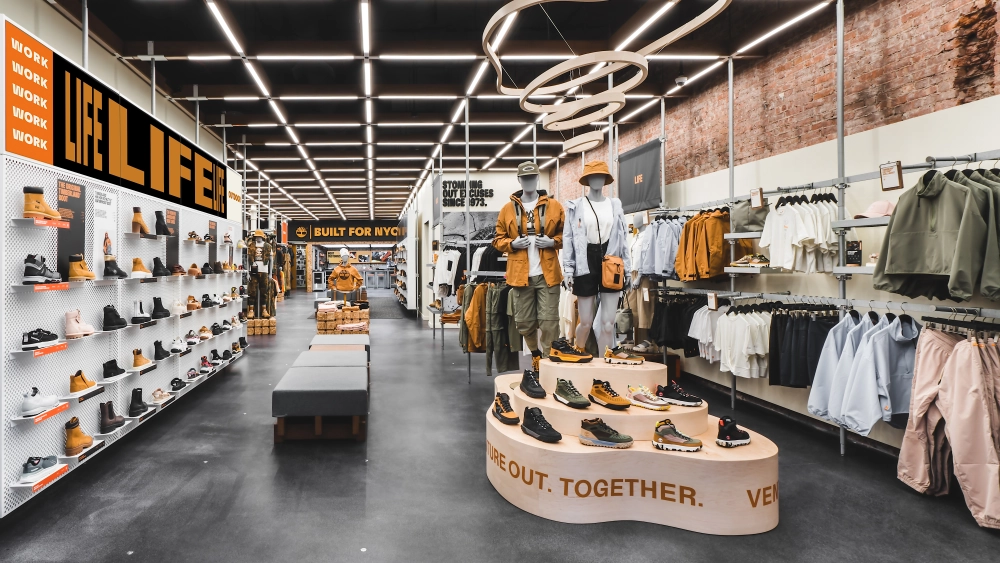Timberland opened a new flagship store in Manhattan’s SoHo neighborhood and launched its first U.S.-based membership program, The Community, across all stores and online.
A store highlight at 550 Broadway offers free on-site product customization and personalization, including laser etching, heat pressing, and embroidery, on all consumer purchases in a dedicated space at the back of the store Timberland calls “The Shed,” a spinoff of its prototyping lab and maker room at its global headquarters in New Hampshire.
Members can also visit the store for boot cleaning, repair services and programming, including workshops with local community business owners and authenticators, styling sessions, and guided hikes.
The materials used to build the store include metal fixtures inspired by NYC scaffolding, while white oak and Oriented Strand Board wood panels soften the space. Original brick walls from 1850 were uncovered during demolition, kept intact and left intact to preserve and honor its place in retail. Timberland’s iconic wheat and Timberland Pro safety orange colors take center stage throughout the 3,254-square-foot space, and a custom ceiling grid system offers flexibility for evolving business needs, brand activations and seasonal transitions.
The membership program includes early access to products and sales, in-store boot cleaning, free standard shipping, and birthday discounts.
“Timberland may be a New England brand, but we consider New York City our second home,” said Tracy Smith, vice president and general manager of Timberland Americas. “Stepping inside the 550 store, consumers will be fully immersed in all aspects of Timberland’s outdoor and work heritage. Driving a strong phy-gital retail presence in key cities is a key business priority for Timberland, and New York City is arguably the most important city in the world for us. We wouldn’t be the iconic brand we are today if it weren’t for New Yorkers.”
Timberland worked to integrate sustainability into the buildout of the store, including Hans Boodt mannequins that were 3D-printed using Poly Lactic Acid, a bio-based material made from cornstarch; OSB wood panels made of 100 percent recycled material; white oak made of 90 percent recycled wood; metal components made of recycled metal; 3D-printed plastic caps for tubes using recycled plastic; Zero-VOC paint products; and LED lighting throughout.
.The brand’s Timberloop circular design platform, which takes back and refurbishes worn Timberland items for resale, has a drop box placed prominently within the store.
Photo courtesy of Timberland













